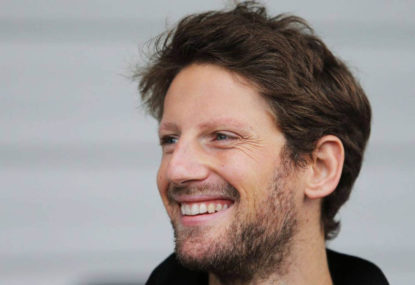Miami Grand Prix talking points: Norris finally breaks the F1 maiden for a fan favourite 2024 victory
The third ever Miami Grand Prix is in the history books and finally Lando Norris has tasted the victory champagne. That is one of…

New Formula One teams don’t come around as often as they used to, so when one does enter the sport it’s treated as a bit of a novelty.
Buying teams has become so de rigueur for hopeful team owners in the last decade — consider the various guises in which the teams based at Enstone and Brackley have competed, for example — that it’s hard to remember exactly what start-up teams look like.
That probably says as much about the last batch of newbies as it does about Formula One’s collective consciousness. No-one can forget the unhappy destinies of F1’s four debutants of 2010, and all future potential entries have been tarred with the same brush until proven competent.
Around this time in 2010 pre-season testing had concluded. Two new teams had made their debuts. Virgin, later Marussia and now Manor, turned up for the second test while Lotus, later Caterham, made it for test three. Campos Meta F1, later Hispania Racing and HRT, had postponed its debut to the first round of the season in Bahrain, and USF1 has collapsed entirely. It wasn’t a pretty start to the year.
Caterham and HRT are no longer with us, dearly departed in 2012 and 2014, and Manor endured a serious near-death experience over the 2014–15 break from which it continuous to recover slowly. Needless to say, the prolonged saga made team ownership decidedly unattractive.
Enter Gene Haas.
Gene Haas is an American machine automation magnate with a business and finance background, and he’s a man already well known in motorsport circles for being 50 per cent of NASCAR team Stewart-Haas Racing, which he launched in 2002 as a vehicle to promote his tools business.
As it is in NASCAR, so too is Formula One an opportunity for Haas to showcase his brand. F1 is essentially a marketing exercise for the Haas company, hence the very sensible ‘Haas F1 Team’ name and equally straightforward silver, black, and red livery drawing maximum attention to the Haas logo.
An unromantic take on the world’s top tier of motorsport this may be, but already we have the building blocks of a strong team foundation.
Haas isn’t throwing his hat into the Formula One ring as an outlandish vanity project. He isn’t doing it to sit on the pit wall and swan around in Monaco. His bid is centred only on creating a platform for his brand, which means his job is to put the right people in place to run the team for him.
For this reason Gunther Steiner, not Gene Haas, is team principal; Romain Grosjean and Esteban Gutierrez, not a pair of pay-drivers, are in the cockpit; and the team has a home in the United States but is based in Banbury, UK.
More important than all of those things, however, is that the team is exploiting the rules to minimise the number of parts it has to build itself, preferring instead to buy as many parts as is allowed under the rules for later assembly. For a man who made his millions in machine automation such a strategy is surely second nature.
As a result the Haas VF-16 is a car made of a significant number of Ferrari parts. The chassis, the intellectual property for which must be owned by the team, has been outsourced to experienced Italian firm Dallara. The culmination is operated by a series of experienced drivers and personnel poached from other teams. Forget power units — Haas is Formula One’s perfect hybrid.
At the first test of the pre-season the Haas team completed 281 laps — more than McLaren and Manor and more than four grand prix distances — but could easily have completed more had a front wing failure not restricted it to 31 laps on its first ever F1 session. A solid debut points-paying season is justifiably expected.
What does Formula One learn from this? Chiefly that it can keep its grids healthy by fine-tuning how much a new entrant can ‘buy’ its way into the sport, and it can do so without damaging its credibility in the same way the introduction of customer cars would undermine the technical competition.
For example, allowing teams to buy certain parts that either do not contribute to performance or are not considered central to the competition can be exchanged for mandating that certain elements deemed advantageous to the sport’s image or regulatory philosophy are built by each respective team.
Does F1 want to focus more on electrical power? Regulate for each team to design their own energy recovery units in exchange for the freedom to buy certain aero parts. What if the sport wants to hasten the development of active suspension? Trade it for the ability to share some other componentry.
Haas is showing us this system can work. If the experiment is deemed a success by the end of the year, the smaller cash-strapped teams will surely consider similarly scaling down how much they build for themselves.
In this is an opportunity to direct Formula One into new technological frontiers beyond aerodynamics. Now is the time to seize the initiative.
Follow @MichaelLamonato on Twitter